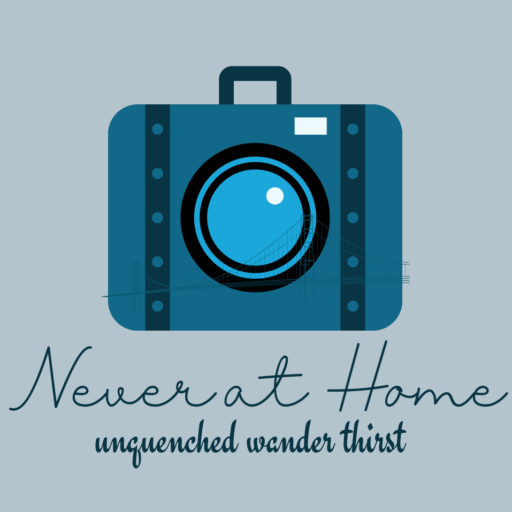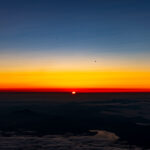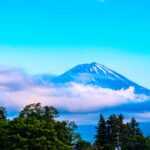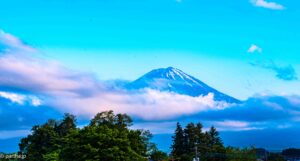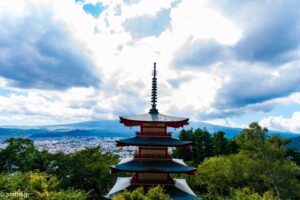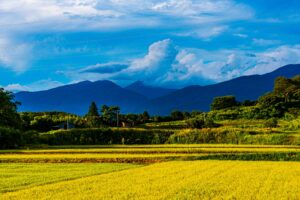
Komoro 小諸 came up on our radar due to a quaint yet affordable Airbnb listing. The unassuming listing promised us a ‘Earthern Straw Bale House’ right in the middle of farmlands.
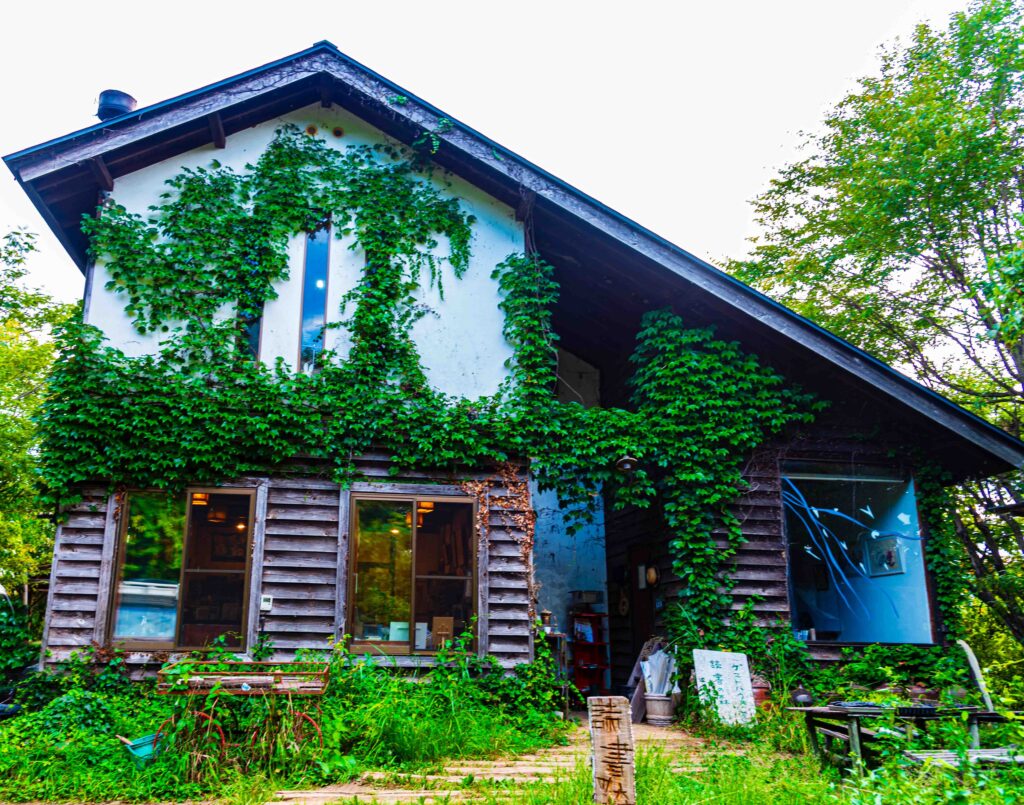
We have done a few stays at off-beat locations, one old house at the edge of a stream, a log-house on an interior road, but we have never stayed at a place that seems to be surrounded by farms.
The booking was done and the hosts confirmed it the next morning. The maps guiding us to the house seemed simple enough and the phone number showed up on the car navigation system.
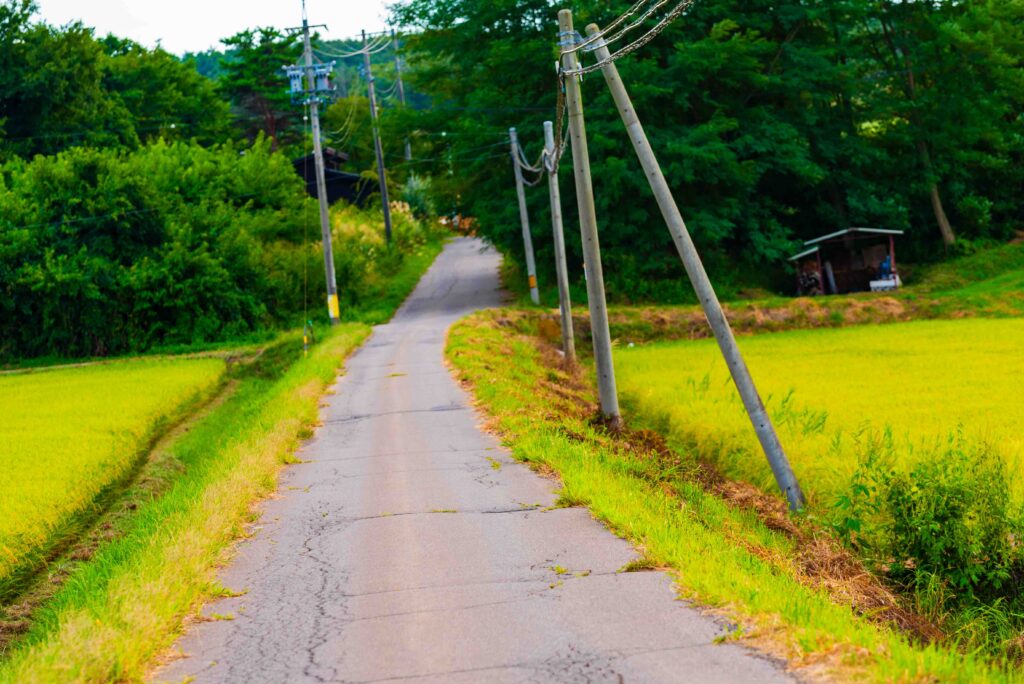
The drive to Komoro goes through the Tohoku Expresway, the Metropolitan Expressway, the Kan-etsu one, then the Joshinetsu one towards Nagano, the Kokudo 141, the Prefecture road 153 and the final part is a one carriage lane surrounded by fields, the Cafe/Bookshop and our accommodation on the right.
A car with low suspension cannot make the short uphill climb to the cafe door, so we chose to park near the road, and walked up to the cafe.
The host used to be a philosophy professor so there was something Zen about his interactions. There was an unhurried calm when he served us tea, and then took us to the room, a cylindrical shaped hut with futons, a fan and a few power points provided.
The area is full of farms and the houses are spread far apart, one can walk down the country roads and not meet anyone. The farmers grow rice in the fields and the at the end of summer the ears of the rice plants stood heavy and ready for harvest.
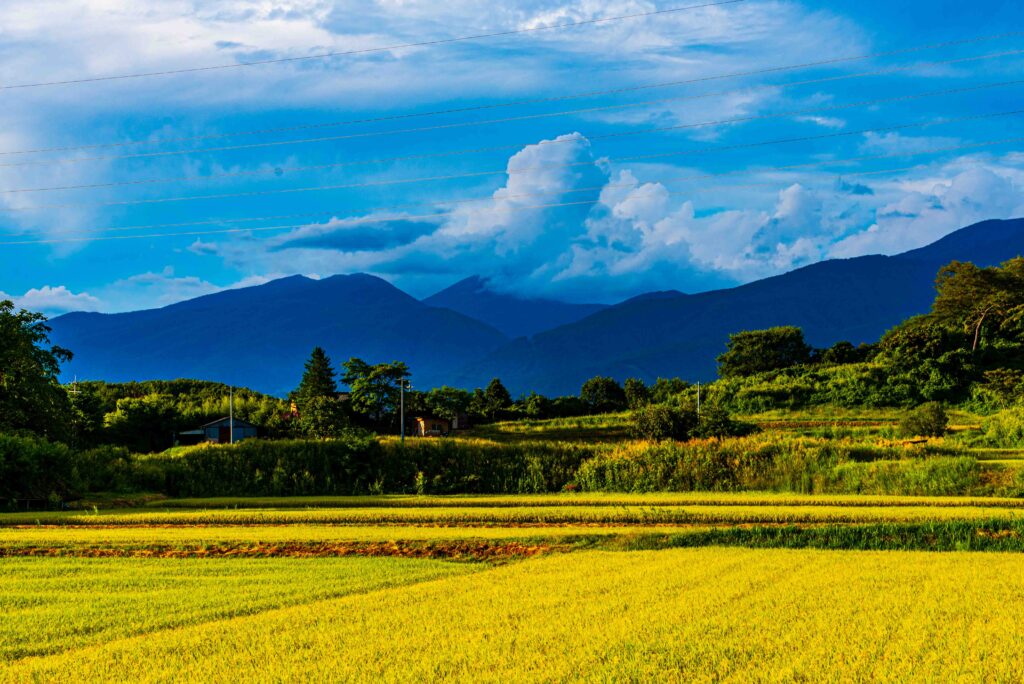
Green fields stretched all around, an occasional house, a storage shed or solar power panels interrupting the endless green. The summer skies were scattered, hiding the sun and in the far distance blue mountains stood out.
An elderly lady was out on her early evening walk, hiking poles in hand. She passed us, looked at us and smiled. As the Sun set behind the clouds, darkness shrouded the landscape, the fields disappearing, the streets dark and the windows of the houses providing the odd twinkling light.
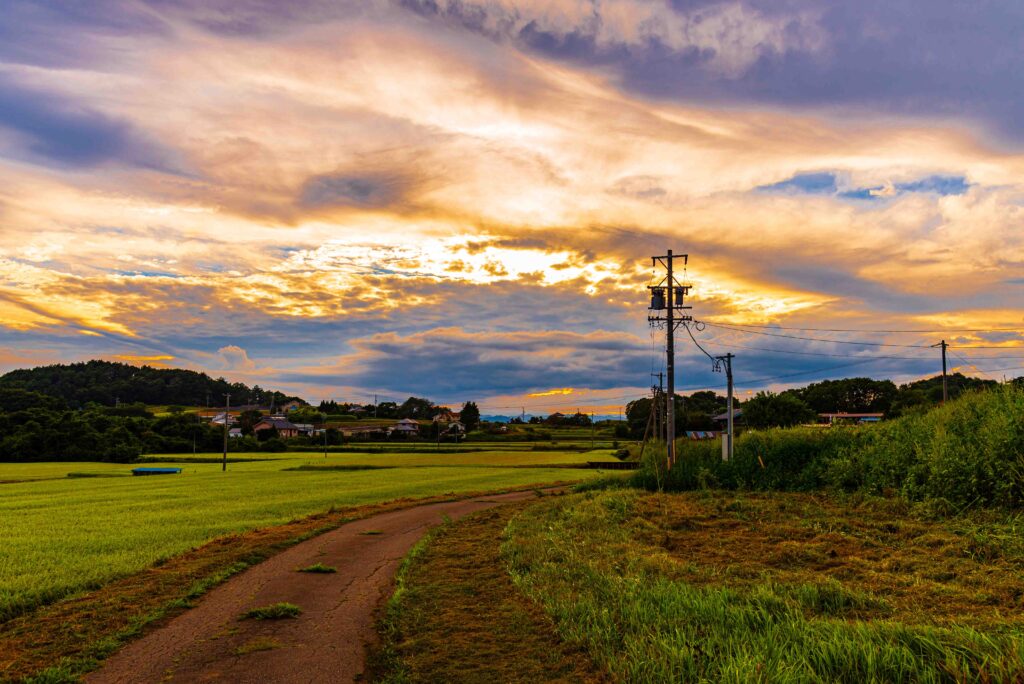
Invisible Castle
Distractions for the visitors to Komoro are limited, there are a few Onsens 温泉 or hot spring around. The other notable excursion is to the Komoro Castle.
The Castle ruins has been developed into a park and the complex is called Kaikoen, translated as ‘Garden of Introspection’. There wasn’t much introspection to be done on a late summer morning. The heat wave that enveloped Japan through July and August of 2023 had stretched into September and patience with the weather was running thin.
Komoro Castle is not a castle structure but the remains of one that was built in the 17th century. Battles, natural disasters and time have destroyed much of the structure The ruins are listed among the best 100 castles in Japan and also rank among the top 100 spots for Cherry Blossom viewing. One of the unique points about the castle is that it is located at a lower altitude that the surrounding town.
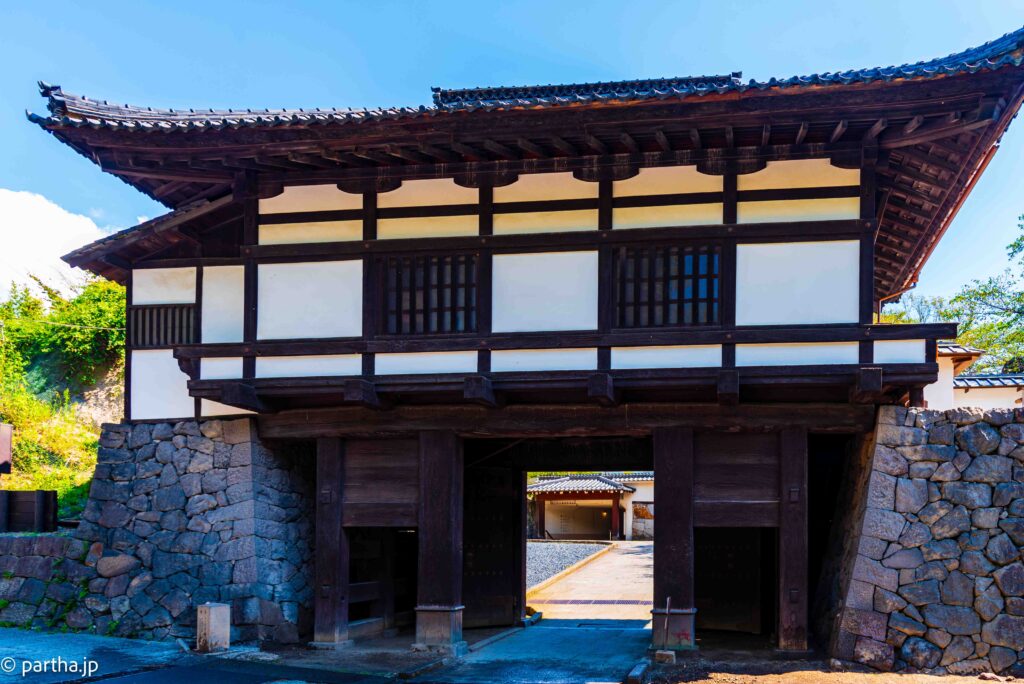
The castle is built in a depression protected by cliffs, a steep valley and the Chikuma river. This sets the castle apart of other similar structures in Japan which were always built on hilltops.
The Otemon gate and the stone foundations of the castle exist even today and are the the only remains of this old fort. Battles were fought here in the 17th century between the Eastern and Western armies.
However the most famous architectural feature is the Sannomon gate that was built in 1642, washed away in the floods of 1742 and rebuilt in 1765.
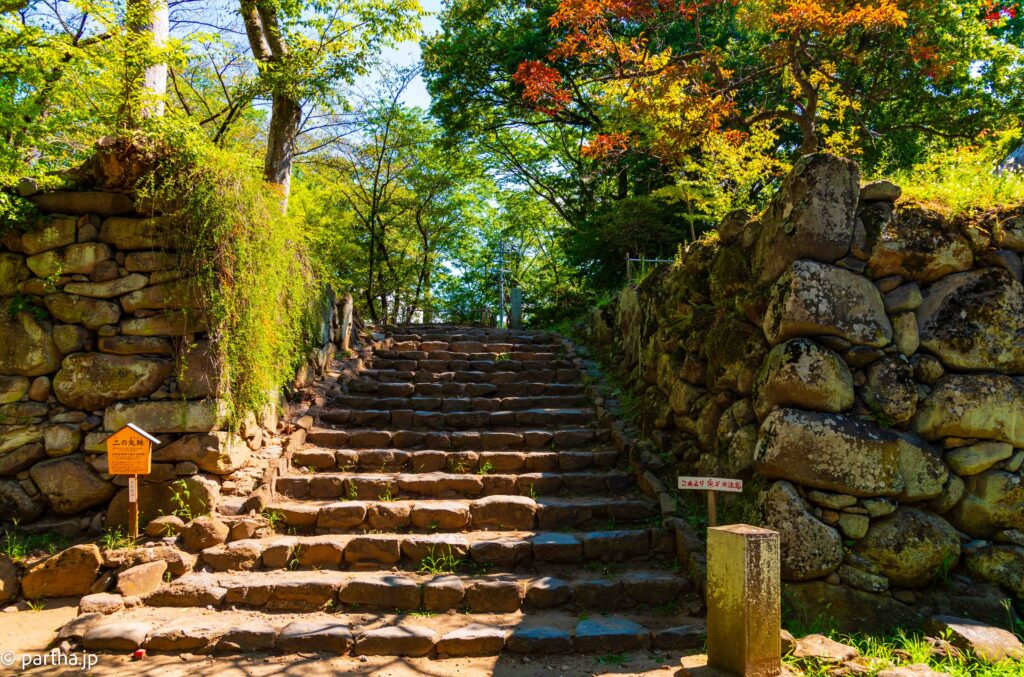
The castle was abandoned and gradually dismantled after the Meiji restoration in the early 1800s, however some important features still remain including the original stone foundation.
The park has a few cultural facilities such as the Memorial Hall of Toson, which depicts the Komoro days of Shimazaki Toson, a writer known for his works such as “The Broken Commandment” and “Before the Dawn,” as well as the Koyama Keizo Museum of Art and the Takahama Kyoshi Memorial Hall.
There are more modern attractions, a zoo with penguins and there were children at the park eagerly making their way to the zoo.
At the end of the park there are viewing points that provide splendid views of the Chikuma river and Mt Fuji. The Fujimitenbodai 富士見展望台 and the Mizunotetenbodai 水の手展望台 are located at the corner of the two far ends of the park and probably provide splendid views in clear weather. Unfortunately summers come with clouds and our view was obscured by the clouds that seemed to have totally overwhelmed the mountain view.
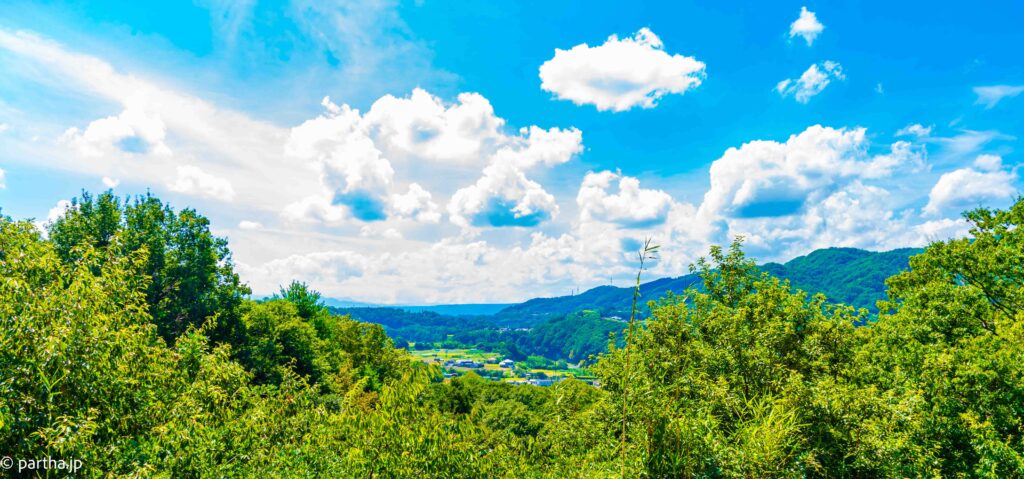
A few restaurants advertising their Soba specialities dot the park and a lunch at one these joints seems to be a part of the attractions.
If the zoo is not of interest, it wasn’t for us, the walk around the park can be finished in 30 minutes. As we walked back to the exit, the mid-day sun heated warmed up the surroundings.
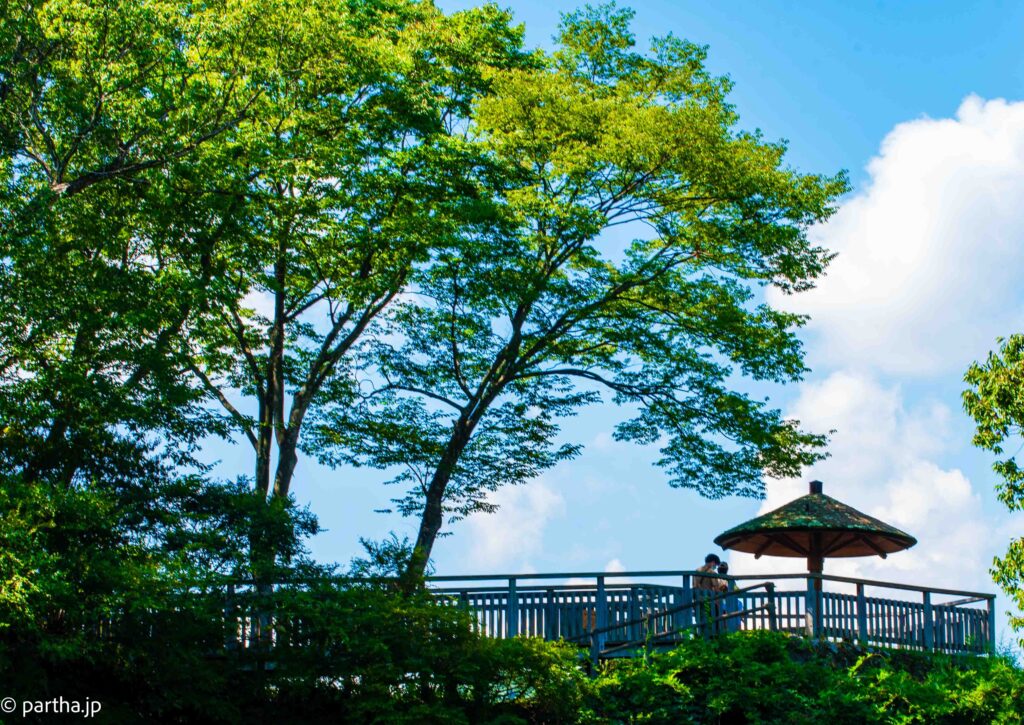
The heat did not deter the children walking excitedly toward the zoo. They walked past the castle, invisible but for the stones that stood for its foundations, up the winding path where a more modern attraction waited for their attention.
